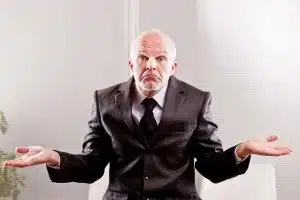
The Contrast Effect in Consultative Selling: How Smart Framing Drives Sales
The Contrast Effect in Consultative Selling: How Smart Framing Drives Sales
When buyers make decisions, they don’t always evaluate your offer in isolation—they compare it. And how you set up that comparison could be the difference between a win and a walkaway. That’s the power of The Contrast Effect.
What is The Contrast Effect?
The Contrast Effect is a psychological principle where the perception of something is influenced by what it’s compared to.
Put simply:
-
A €10,000 solution may seem expensive on its own.
-
But after showing a €20,000 option first, it can suddenly feel reasonable—even cheap.
This subconscious comparison process shapes how buyers assess value, urgency, and risk.
Why The Contrast Effect Matters in Consultative Selling
Consultative selling is all about understanding your customer’s needs and guiding them to the best-fit solution—not just pushing a product. But even in this advisory role, how you position your recommendation matters.
Using The Contrast Effect helps:
-
Reframe price sensitivity
-
Elevate perceived value
-
Make decision-making easier for the buyer
And the beauty? You’re not manipulating—you’re clarifying.
Practical Ways to Use The Contrast Effect in Sales Conversations
Here’s how to ethically and effectively apply The Contrast Effect in your consultative sales process:
1. Use Tiered Options (Good-Better-Best)
Present three packages or solutions:
-
A basic option (entry-level, minimal features)
-
A premium option (high-end, best-in-class)
-
A middle-ground option (your target offer)
Most buyers will gravitate toward the middle, seeing it as the best value. The higher-priced option creates contrast that makes your target offer feel reasonable.
2. Show the “Do Nothing” Cost First
Start by highlighting the cost of inaction—in lost revenue, inefficiency, or risk.
Then, position your solution as a smart investment by contrast.
Example:
“Sticking with the current system could cost €50K/year in downtime. Our €15K solution eliminates most of that.”
3. Contrast with the Wrong Fit
If the client is considering a poor-fit competitor or internal solution, gently contrast it with your offering.
Focus on outcomes:
-
“Yes, Option A is cheaper upfront, but you’d be missing automated compliance tracking—what will manual tracking cost in time and risk?”
You’re not criticising—you’re reframing the total value.
4. Use Anchoring in Price Conversations
Introduce a higher anchor early in the conversation:
“In the industry, similar implementations can run up to €50K. Ours is typically half that, depending on your setup.”
The anchor creates a frame of reference that makes your actual quote feel more competitive.
A Word of Caution
The Contrast Effect is powerful—but it must be used authentically.
Buyers today are smart. They’ll see through false scarcity or artificial comparisons. That’s why this principle works best in consultative selling, where your credibility is already built on understanding their needs.
Use it to:
-
Highlight real alternatives
-
Clarify value
-
Empower confident decision-making
Final Thoughts: The Contrast Effect is About Clarity, Not Pressure
The goal of consultative selling isn’t to trick buyers—it’s to guide them.
By using The Contrast Effect, you’re helping prospects:
-
See your offer in the right context
-
Understand the true value
-
Choose with confidence
And when buyers feel confident, they commit.
For another slant on The Contrast Effect see Duncan Stevens contribution HERE




